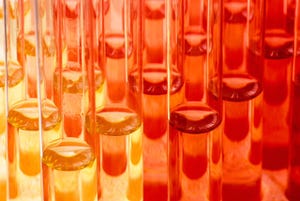October 14, 2011
A sulfur coating on hollow carbon nanofibers, combined with a special electrolyte additive, has allowed researchers at Stanford University (Stanford, CA) to overcome the energy storage limitations of lithium-ion batteries. Based on the previous work done by Stanford's associate professor of materials science and engineering Yi Cui to make battery anodes with silicon nanowires, Chi's team has now improved the cathode end of rechargeable lithium ion batteries by pairing the silicon nanowire anodes with sulfur-coated carbon cathodes.
Using sulfur in batteries has become a popular idea due to the low cost and non-toxicity of sulfur, and by using a sulfur cathode, Cui's team has determined that it is possible to make a battery with 4 to 5 times the energy storage of a lithium ion battery. Previous generations of lithium-sulfur batteries have been known to rapidly fail with repeated charging and recharging due to coating relatively open carbon structures that are exposed to the battery's electrolyte solution. Maintaining a large surface area for electrical and ionic conductiveness is important, however, the battery's capacity can be reduced when the electrolyte solution comes into contact with intermediate reaction products called lithium polysulfides, so the Stanford team had to find an optimal solution.
To solve the conflict, a fabrication process using technology commercially available for water filtration was used to coat only the inside of a hollow carbon nanofiber with sulfur. The long, hollow nanofibers are 300 times the length of its diameter, preventing polysulfides from leaking out into the electrolyte solution. And to design the best structure, not only was the electrode design changed, but a new electrolyte additive was also created to enhance the battery's coulombic efficiency, boosting the electron output from 85 per 100 electrons to 99 per 100.
The research was reported in the journal Nano Letters, and Cui says that the new cathode fabrication resolves material issues that represented a big challenge to get lithium-sulfur to work as a viable battery.
You May Also Like


